Wood Boilers- indoor/outdoor, open/closed,
gasification……what???
Will someone just level with me?
I have been in the Fire/Hearth/HVAC/Building industries for
over 32 yrs. The one thing I know for
sure is that I don’t know everything……….the following is just my honest
assessment based on my experience.
One of the reasons I love what we do is because I’m always
learning new things. Our goal as a company is very simple; help folks cut
through the “hype” and figure out what they need to accomplish their goal. Our
job in my opinion is to tell the truth and give honest advice based on our experience,
what works and what may not meet the customer’s expectations.
Obadiah's Woodstoves and Wildfire Fighters
Please visit our website for one of the largest selections of Boilers found anywhere. We have a large selection of residential, commercial, agricultural and industrial indoor and outdoor boilers.
Commercial Waste Oil Boilers,
Commercial Biomass Furnaces ,
Commercial Biomass Boilers,
Commercial Pellet Boilers ,
Commercial Coal Furnaces ,
Commercial Coal Boilers ,
Commercial Wood Furnaces,
Commercial Wood Boilers . We offer waste oil, trash burning boilers that burn cleanly from Glenwood Boilers.
Waste Oil Boilers We also offer Coal, Pellet, Chip and Corn burning boilers from Traeger, Americas Heat, Pelco, WoodMaster, Glenwood, Portage and Main, as well as Biomass Boilers that will burn anything from sawdust to horse manure from Glenwood and others.
Coal, Corn, Chip, Pellet and Biomass Boilers We specialize in North American built high efficiency gasification boilers from Econoburn, Woodmaster Flex Fuel, Pro Fab Elite and Portage and Main Economizer.
North American Gasification Boilers We offer European import Gasification Boilers from Attack, Biomass, Effecta, and EKO.
European Gasification Boilers We also offer simple non electric boilers like the AquaGem by DS Stoves.
Non Electric Amish Wood Boilers and Furnaces Obadiah's has special liquidation sales occasional and occasionally you can find super deals like what we're offering on the Greenwood boilers now, from Pro Fab Industries.
Greenwood Liquidation Boilers And Furnaces 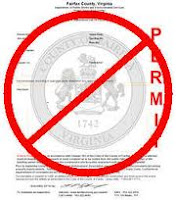
I have spoken with several folks who called me because they now have
an outdoor boiler sitting in their back yards with CONDEMEDED DO NOT USE sticker
on it. Worse yet, the unit is only a couple of years old.
What happened you ask? They qualified for financing and the
largest outdoor boiler company in the world was there with an aggressive sales
force and before they knew it that had a note for anywhere between $10-20k
depending on their installation. Did anybody ever take the time to tell them
that there was a potential EPA problem looming on the horizon……….or that their
community was fixing to outlaw outdoor boilers…….no, the sale was more
important than the truth.
.jpg)
The folks above were not our customers;
however, we like to think that we could have prevented their predicament with some
simple friendly advice. Let’s see if we
can clear the smoke out of the air here, so to speak, and get down to honesty
and some basic laws of physics, thermodynamics and simple reality. My hope is
to lay a foundation for you to make an informed choice.
Outdoor boilers, why the bad rap? Well very simply…….most
don’t burn very clean and are simple smug pots that smolder all day long. Top
that off with a customer who has never burned wood before, or worse, a trash
burner who thinks he now has an incinerator…….and you have a recipe for unhappy
neighbors. Combine someone with asthma,
or other respiratory problems and things can get really bad fast.
.jpg)
There are some very simple designs that will never work if
you’re trying to achieve a clean burn.
In order to burn fire needs three things, fuel, air, and heat = COMBUSTION.
To burn clean, wood needs to burn very hot, the hotter the better = the cleaner
burn you get.

It is next to impossible to achieve those kinds of temperatures with
a firebox wrapped in steel filled with water. The water will always act as a
heat sink and absorb most of the heat needed for total combustion. Most outdoor
non-gasification boilers operate this way. In my opinion, unless you live in NW
Montana or some wide open area and lots of smoke is still carbon neutral…..stay
away from this kind of boiler. They cannot burn clean if the firebox is
surrounded in water.

Outdoor Boilers………..think about that for a few
moments…………let it sink in. Outdoor boilers are almost an oxymoron when you
really think about it. You are taking the very expensive boiler and pumps that you’re
using to heat your home, or shop……..and sticking it outside in the coldest possible
place. Does that really make that much sense? Yeah ok, get the wood and bugs
out of the house, I’m all for that, no problem, but I ask you what about the
wood you are going to put in your nice new shiny wood outdoor boiler? Are you
planning on dumping it on the ground out in the middle of the yard and dig your
wood out of the rain snow and mud and use that to feed your boiler. If so, you’ll
be sadly disappointed. Wet, green wood does not burn well. Furthermore it
stinks and more than half the BTUs are consumed drying out the wood so it can
burn. Even with the “most efficient boiler”, your efficiency will still would
drop by half and the chimney will plug up with creosote and become a fire hazard.

If you stick your new shiny outdoor boiler outback so the bugs need
to form an expedition to get to the house, there are some drawbacks. The
further away you go, the longer the trench is that someone needs to dig to bury
the lines that run hot water back to the house. Now think about that line that
you’re going to bury in the ground. It is usually two PEX pipes wrapped in some
kind of insulation in between, stuffed in a long black corrugated pipe. This
stuff runs between $5-10 per ft. They make a better product with close cell
foam injected which has a higher R-value for $10-20 per ft.
Underground Insulated Pipe- The Good, The Bad, The Ugly
Truth…..
95% of all underground pipes leave no gaps between the feed
and return PEX lines. When you consider
the BTU bleed off factor you get when you bury this low R value pipe in the
ground, not to mention the very low R-Values, I wonder how the contractor could
sleep at night. So many BTUs are cancelled out in the pipe before they reach
the place where the BTUs are needed. In a
water to air heat exchanger, this can be a problem on really long runs. My
advice is, if you’re going with an outdoor boiler, run two corrugated lines
with two hot feeds in one pipe and two cold returns in the other. Don’t skimp here;
otherwise you’ll be heating the ground next to your home and not your home or
shop. Here is a good place to see what has happened to others.
http://www.hearth.com/talk/threads/insulated-underground-pex.48808/
I have heard that some of the underground PEX pipe companies
claim less than 1 degree heat loss in 100’……..please… Let’s take a simple look at this idea
and see how much sense it all makes to you.
In some cases when you are heating several separate buildings, moving
heat between them underground, is necessary. If you must bury your feed and
return in the ground, do it right the first time, since digging it back up
again is very expensive. So let’s take a look at what kind of underground PEX
pipe is available. Consider this; even if you live in Georgia, the soil temps in
the winter are within about 20-30 degrees of Montana temps below our frost
line. The key is how deep you bury your pipes.
In northern climates most folks dig below the frost line for their
area. Where I live that is 7’. At 7’ depth the ground pretty much stays in
the 50 degree range. See my point? The
water lines that feed our outdoor water hydrants are buried that deep so they
don’t freeze.

When you look closely at underground PEX pipe you’ll find lots of
variations. In my opinion, you want the highest R value possible for as long as
possible. The ground is a cold damp place and most insulation will become
waterlogged and lose their R-values. In
most high efficiency wood boiler installs we are looking for as many BTUs per
pound of wood as possible. To do this requires that most of the BTUs stay
inside the PEX until they arrive where they are most needed. Therefore we use
two separate lines, one for the feed, and one for the return. I run them
separately instead of all inside one pipe, because it is very hard to insulate
the cold return from the hot feed inside one pipe. Of course most outdoor wood
boilers are so inefficient, line loss does not matter either.
You can save a lot of chopping and
wood handling by reducing the amount of BTU loss in your installation. Here are
some pictures of various underground PEX systems and what to watch out
for. The type of pipe shown has very low
R-Value and will lose lots of BTUs. Notice the air space and no insulation
between the Feed and Return. This is very bad.

Next if you look at this pipe it has
more wraps and is better insulated, but still has just one wrap of insulation
between the Hot Feed and Cold Return. Still not good as they work to cancel
each other out in the end. Your hot feed temps will be much lower as they have
been cooled by the cooler return line temps. Bury your Feed and Return lines
separately using underground pipe like ThermoPEX shown on the right.
I like to lay my pipe in a
trench that has a layer of at least 2” thick rdgid foam that is about 14” wide
and is laid in the bottom before I lay the pipe. I then lay the Feed and Return
pipe’s on top of the foam. We then call in an insulation contractor who sprays
the entire trench with at least 24” of foam. We then cover it with heavy gauge
plastic to shed moisture and bury it. We lose very little BTUs to the soil.
I have also done the same thing
above ground on short runs that we can enclose with both rigid and spray polyuerathane
2 part expansive foam. This foam can absorb water and it will loose its R value
if it gets damp. So it is very important to protect all foam from moisture. It
is easiest to keep moisture out above ground. Below ground is always going to
be damp and eventually your R Values will drop over time. A simple roof to shed
water above the pipe when it is installed above ground works well.
I have seen folks build a
trough from foam panels and ply wood, lay in their ThermoPEX and fill with Foam
beads and closed off. They build a roof over it all and have easy access if
they have a problem later on down the road.
Heat
Handlers and Water to Air Heat Exchangers-The Truth
Few folks will tell you the
truth about forced air systems. Air is a great insulater - just look at your new high effeciency thermal
windows. How do they work? There is an
air space under vacuum and in some cases injected with Argon gas to further
increase thermal effeciency. Very simply,
air is a fantastic insulator.
So that means that heating air is
inherently not very efficient to begin with……the higher the humidity in the air,
the better it transfers heat, the drier the air, the better it transfers the
cold. On the other hand, water has excellent thermal conductivity properties.
It also can store and transfer heat very effectively. Therefore hot water heat
is the most efficient way to heat anything. Water is also a very effective way
to cool things, hence the way a nuclear reactor is cooled. Remove the water flow and we all have witnessed
what happens….
Heat handlers are an easy way
to make heat; they also allow folks with forced air furnaces to utilize hot
water heat and realize some cost savings
compared to burning fossil fuels. If you
live in an area where you need air conditioning most of the year, then forced
air makes sense and I would not worry much about effeciency loss either.
If you are starting fresh with no
heating system, the radiant In-floor heat is something you’ll never want to
live without, once you have experienced it. There is very little temp diffrence
between the floor and ceiling, which cuts down on heat loss through your roof.
Your floors are warm as are your feet; toasty
warm as we call it.
If you already have forced
air and want a wood boiler to cut your fuel bills, it is not that difficult to
add a water and air heat exchanger into your exsisting plenum, to make hot air.
You do not need to run radiant flooring or baseboards to make it work.
The picture on the left shows a
typical hot water/hot air system. If you have to have air conditioning in the
summer through your central air system, this would be how it would be set up
utilizing the exsisting plenum. There is
also a way to heat your domestic hot water with this set up.
The Pro Fab Heat Handler is a
complete self contained plug and play system that works great with the HPBA
Vesta Award Winning Elite 100 and 200
Gasification boilers.
The
key to burning wood cleanly and efficiently
Man has been burning wood as
a renewable, carbon neutral fuel for thosands of years. It is only recently that we have given much
thought to what is coming out of the chimney.
We Americans do seem to be
behind the curve in this realm. There are some wonderful new North American products
out there, but in reality, the Europeans have been at this game a long time.
They have it down pretty good if you are comparing a high tech gasification
boiler to a firebox submerged in water.

The EPA has been clamping down on
woodstoves in the USA for many years. The new EPA rated stoves burn cleaner,
longer, produce more heat, and with less wood. American and Canadian
manufacturers have stepped up to the plate and re-engineered their product line. More and more communities are concerned about
airborn particulate. They are passing regulations requiring all new and replacement stoves be EPA certifed and
display the test results so the world can see. It is a behind the scene competition
among manufacturers to produce the cleanest stoves. It is now a sense of pride
to build the cleanest stoves.
Some manufacturers added
catalytic combustors and a new replaceable product for their dealers that needs
servicing every year and replacement every few years. The better manufacturers
played around with secondary combustion.
By injecting air into the top of the firebox they found they could
reburn the gasses and get more heat and less smoke. Today the best woodstoves
do not rely on catalytic combustors.
Did you realize that in
Switzerland it would be illegal to sell or install a typical North American
outdoor wood boiler which has been sold and installed by the tens of thousands
across North America? The same holds true for most of Europe. They are amazed
that we would burn such an outragous product and even more stunned at how popular
they are here. But that is changing rapdily as folks begin to do their homework
online and can see how the rest of the world does it.
3
Steps to Complete Combustion.
To burn solid fuels such as
wood efficiently, you need complete combustion. For complete combustion you
need 3 things - fuel, air and ingnition. How you control that process determins
how well combustion occurs. By moving the combustion below the
firebox where the wood sits, you super heat the fuel which vaporizes as a gas,
the gas is drawn through a funnel which is re-combustion occurs at aprox 2000 degrees.
There is very little particulate that escapes the chimney. Instead of smoke
there is water vapor.
Here are some various
pictures of gasfiaction boilers where the combustion chamber is below and
combustion is controlled through variable speed blowers and oxygen controls. As
you can see by the way the fire burns and how hot it gets, the thick refractory
reflects all that intense infrared energy back raising the combustion temps
like that of a steel blast furnace, far higher than if it were surounded with
water and steel. The Pro Fab Elite is a good example shown on the right below.
The pictures demonstrate
how a wood gasification boiler works. Combustion takes place at extreme
tempertures below the firebox, essentially cooking the cordwood in the firebox
above. As the wood cooks it releases gasses which are then burned cleanly.
Other
high effeciency wood boiler designs
The Seton and the Greenwood boilers
will also achive simular particulate exhaust results by an extrodinarily long
flame length during burn and the massive cast refractory construction. The infrared
is bounced around inside the firebox and the flames are pulled up through the
heat exchanger and down through the exhaust, mounted on the rear of the boiler
near the floor. The smoke temps here generally are only about 300 degrees.
Pretty remarkable when you consider that over 1200 degrees went into the hot
water heat exchanger!
The Seton/Greenwood boiler is
a very simple yet efficient design. It works well as long as it is properly
installed. As with all solid fuel
boilers, it is imperative that the heat exchanger inside the boiler return
side, never fall below 140 degrees or it will condensate and corrosion will begin
to the boiler itself.
All wood fired boilers should have a
Dan Foss type mixing/tempering valve that makes sure the water inside the
boiler always stays in the safe zone (above 140 degrees) and the extra BTUs are
bled off to be used in heating applications.
A few benefits to the
Seton/Greenwood is that it converts the
wood to coke when it is not calling for heat, so it can be used without water
storage. When the temp calls for heat the draft opens and reignition occurs
instantly if the unit has built up thermal energy inside the boiler from
several weeks use. This boiler can burn large full rounds without a problem. It
is much more forgiving to operate and burn, even if your wood is not perfectly
seasoned. It is also mechanical so it is very reliable and not prone to power
surge damage.
Water
Storage or no water storage- what is the best way to go with installing a wood
boiler?
This is the million dollar
question, in my my humble opinion water storage is the best way to go, if you
can make it happen. Let me explain it the way the Europeans view effcient hot
water solid fuel boilers.
Picture this, you have a
gallon of fuel and you have a generator. You need to produce eletricity to
power your home. Running a large generator at an idle all day long does not
make a gallon of fuel go very far, but run the generator at a more efficient
speed and use that power to charge your battery bank. You can then draw a
little power as needed later and the generator does not need to run except to
charge the battery bank again. Depending on how frugal you are with your stored
energy, will determin how long you can go on a charge.

Now picture that same generator as
your new high tech gasifiaction boiler hooked to a set of storage tanks that
are designed to store the BTU’s produced when the boiler is fired up as needed.
What are the benefits you ask? Lots! Once again once you’ve experienced it, you
wonder why you would ever do it any other way……..now you only need to run the
boiler when needed, if the weather is mild, you pull less BTUs from your
storage tanks and they stay hotter longer. So in mild weather you may only fire
the boiler once a week when the tank temps drop below a certain temp, which
triggers a flashing light somewhere that lets someone know its time to fire the
boiler. In extreme cold you may have to fire the boiler every other day. The
boiler runs at an optimal computer controlled combustion, the best and most
effeceint of these employ Labada Technolgy which also montiers the CO output. This
all basicly translates into per pound of wood fed to the boiler, you are
getting over 90% back in usable BTUs. That means less wood hauled, split,
stacked seasoned……..and feed to the boiler. If you are buying your wood, that
really adds up fast.

Letting any solid fuel boiler
idle for days is a very inefficient use of the wood, even a high efficiency
gasification boiler does not retain that efficiency at idle.
All boilers burn best at optimal
temperatures. It is a good idea to have water storage for any boiler
installation, because the same principle exsist in all solid fuel appliances - you can not shut the fire down once started as
you can with gas or oil by turning on and off a valve to control the flow of
fuel. Once the wood is lit it takes a while to achieve good combustion temps. It
is not good to stop, or interupt the process once it has begun. It is best to
burn hot and store the energy in as large of tanks as your installation BTU
demands dictate. It is best to do an energy audit and figure out the BTU load
in the worst of weather. Then you can figure how many BTUs you should be able
to store to last you between fires. We had a customer that was an over the road
trucker who was home every other week. He
loved it that he could go 9 days in the coldest of weather before having to
fire his boiler, so his wife did not have to bother with it at all.
Installing your tank inside the home
in the basement puts all those BTUs that do bleed off, inside the structure
that you are heating, so there is little heat loss.

.jpg)
.jpg)




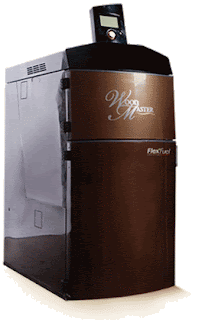
Next comes choosing a good gasification
boiler. Today in North America you have far more choices than you did just 10
yrs ago. Pioneers like Craig Issod of
www.hearth.com saw the handwriting on the wall and began importing the HS Tarm line of
boilers way back when. These were cutting edge technology back then and there
were few competitiors. Others soon followed and now you also have many options
to pick from in European gasification boilers. Polish imports like EKO and
BioMass offer a big bang for the buck. The new Effecta boiler is a Swedish
built contender utilizing Lambda Technolgy. The Vigas has gained populairty particularly
back east. If you want to stay North American made, the Pro Fab Empyre Elite
series offers a great value for the price. The Woodmaster Flex Fuel Boiler is a
state of the art US/German venture that is awesome and also utilizes Lambda
Technolgy.
Whichever model boiler you go with,
pick your dealer wisely. Great deals can be found online, but what happens when
there are problems down the road. If your dealer won’t support you, you could
be in a pickle. Also make sure you have a good installer who is familiar with
installing boilers and has lots of happy customers. If you are capable of doing
the installation yourself, review your local codes, so you understand all the
requirements to do the installation properly. If your dealer does not know as
much as you, maybe you better find a different dealer. Boilers are not something
to play with if your not sure exactly what you are doing. Find a licenced
professional to help you do the installation properly.
Where
to install your wood boiler?
Your choice here should always be
indoors in my opion. If you have a walk out basement, build a boiler room with
a wood room and a shoot to feed the wood downstairs. Everything is nice and
warm. If you don’t have a walk out basement, some boilers are extremely heavy
and most stairways cannot support the weight.
Have a pro look at it first.
If you want the smoke and
mess out of the house, I agree. Add a shed
on the back of the house, or build a freestanding boiler house to shelter your
boiler and the wood you’ll be feeding it.
Here are some pictures of a perfect
installation in my opionion. Hopefully
they will give you some ideas on how best to plan your new wood boiler
installation.
This is a very professional clean
installation belonging to our customer Charlie Woltz. We can not take credit for this installation,
but it is something everyone would be proud of.
It is very well thought out
and clean! It is obvious that the installer really took pride in their
workmanship. There are many componets to a properly installed boiler system. If
installed properly, a wood fired boiler system should give you 30 yrs of
trouble free service.
Open
or Closed System, what does that mean and what are the benefits?
The easiest way to explain
this is to compare a boiler system to a vehicle cooling system. On a vehicle,
the cooling system is closed. There is a
pressurized cap that will vent if the tempertures get to hot and the system
begins to boil over. Rather than exploding, the cap releases the presure and
the fluid escapes. There is also a thermosat in the system which opens and
closes according the coolent temps. When the vehicle is cold in the morning,
the thermosat is closed and recirculates the water through the engine block, allowing
the engine to reach operating temps faster. Once the engine is warm, the thermosat
opens and coolent flows through the system, regulating the tempertures to the engine
so it runs at optimum temps. Now picture your wood boiler as the engine and the
cooling system as your radiant heating system. They are very similar in design.
The main benefit of a closed
system is that the water will not boil as quickly and it boils at a hotter
temperture than 220 degrees which is where water boils at sea level. That changes with elevation. So in a nut shell,
you can run a boiler hotter under pressure than you can an open system.
So why would you want an open
system? The main reason is saftey, an open system is not presurized and
therefore can not explode if improperly installed. In many places it is a crime
to mess with a pressurized boiler system if your not properly licensed to do
so. Many people have died in boiler explosions over the years, so the
authorities are pretty strict for obvious saftey reasons. Properly installed,
pressurized boilers are as safe as any domestic hot water tank.

Open system boiler systems are non
pressurized and called “Open” because they vent naturally to the atsmosphere.
If the boiler is overfired and boils, steam comes out a pipe and is vented. It
cannot explode because it can not build pressure. There are many boilers in
service that employ this method. The
main drawback of these types system is they must be mointered constantly and
kept full of water. The water is constantly evaporated off the system and must
be replaced or the boiler will eventualy fail from overheating. It will
normally make a terrible racket causing you to think there is an 800 lb. gorilla
inside that is not happy. If that happens you have a few minutes to save your
boiler. There are automated fill systems that will keep your boiler full of water
at all times. If you choose an open boiler system, make sure you invest in a good
one. If the automated fill system fails it will normaly either flood the boiler
room with tap water, or not add water as needed. Always check this system and
make sure it is functioning properly.
.jpg)
There is such a thing as an combo
open/closed boiler system. This is common when you find the boiler is an open
system and the radiant system is closed. Most radiant systems and heat handlers
are closed. The way this is accomplished is through a heat exchanger that can
be a finplate, or a sidearm exchanger. The open boiler system is its own loop
and it circulates that way. BTUs are transferred through a heat exchanger into
the closed loop system.

.jpg)
.jpg)




.jpg)


.jpg)


.jpg)
.jpg)
.jpg)

.jpg)
.jpg)
.jpg)
.jpg)
.jpg)
.jpg)
.jpg)
.jpg)

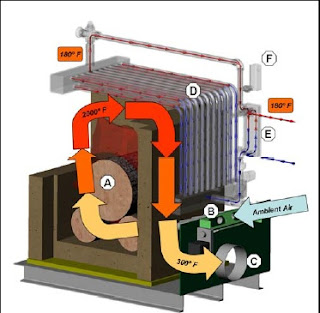




.jpg)
.jpg)









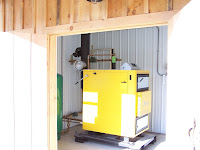

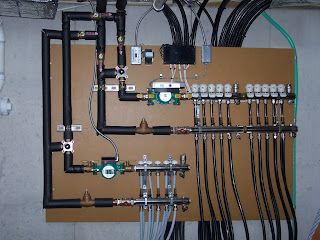


.jpg)